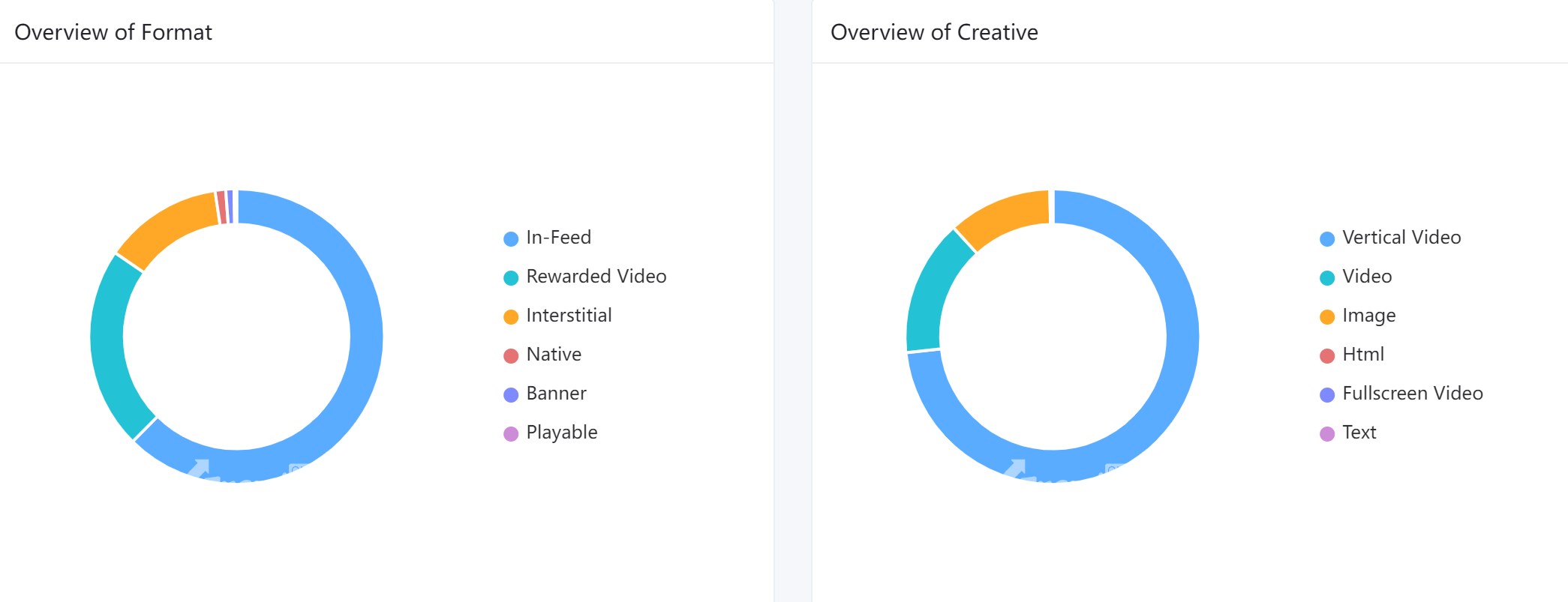Solitaire: Classic Card Games is one of the most popular card game apps in the world. It is developed by Tripledot Studios, a UK-based publisher that specializes in casual and hyper-casual games. The app has been ranking high on the Google Play charts in many countries, such as United States, Japan, Australia, etc. But how did it achieve such a global success? What are the smart advertising strategies that it used to attract and retain users? In this article, we will use the data and insights from AppGrowing to reveal the secrets behind Solitaire: Classic Card Games’ success and provide some tips for app marketers who want to follow its footsteps.
01 The Power of Diversified Ads
One of the key factors that contributed to Solitaire: Classic Card Games’ success is its diversified ad strategy. According to the data monitored and collected by AppGrowing, Solitaire: Classic Card Games has created 19,227 ads in total, covering 50 areas and 10 media. This means that the app has a wide reach and a varied media mix, which enables it to target different segments and markets. The app also updates its ads regularly, creating 4,158 ads from 2023-04-21 to 2023-07-19, which shows that it is constantly experimenting and optimizing its ad performance.
By using diversified ads, Solitaire: Classic Card Games can appeal to different preferences and cultures. For example, some of its ads use catchy slogans such as “The #1 Solitaire Game”, “The Most Relaxing Game Ever”, or “The Ultimate Time Killer” to highlight the benefits and features of the app. Some of its ads use testimonials from real users or celebrities to showcase the popularity and credibility of the app. Some of its ads use humor or challenges to entice users to try or continue playing the app.
Source: AppGrowing
02 The Advantage of In-feed Ads with Vertical Videos
Another key factor that contributed to Solitaire: Classic Card Games’ success is its use of in-feed ads with vertical videos. According to AppGrowing’s data, around 62.42% of its ads are in the form of in-feed ads, which are ads that appear within the content feed of a social media platform or an app. In-feed ads are more native and less intrusive than other types of ads, which can improve the user experience and engagement. In-feed ads are also more suitable for mobile devices, as they can fit the screen size and orientation better.
Source: AppGrowing
Moreover, around 73.26% of Solitaire: Classic Card Games’ ad creatives are vertical videos, which are videos that are designed to be viewed in portrait mode. Vertical videos are more immersive and eye-catching than horizontal videos, as they can fill up the entire screen and capture the user’s attention. Vertical videos are also more convenient and comfortable for mobile users, as they do not require them to rotate their devices or adjust their viewing angles.
03 The Leadership on Facebook (FAN)
A third key factor that contributed to Solitaire: Classic Card Games’ success is its leadership on Facebook (FAN), which is one of the largest and most popular social media platforms in the world. According to AppGrowing’s data, Solitaire: Classic Card Games so far advertised mostly on Facebook (FAN), with a total of 22.54% ads. This means that the app has a strong presence and influence on Facebook (FAN), which can help it to reach a massive and diverse audience.
Source: AppGrowing
Solitaire: Classic Card Games also leverages Facebook (FAN)'s features and functions to create effective and engaging ads. For example, some of its ads use interactive elements such as buttons or sliders to invite users to play or download the app. Some of its ads use dynamic elements such as animations or transitions to showcase the gameplay or graphics of the app. Some of its ads use social elements such as likes or comments to encourage users to share or recommend the app.
04 Conclusion
Solitaire: Classic Card Games is a successful example of how to use smart advertising strategies to achieve global success in the card game market. By using AppGrowing’s data and insights, we can learn from its best practices and apply them to our own app marketing campaigns. Some of the key takeaways are:
- Use diversified ads to appeal to different segments and markets
- Use in-feed ads with vertical videos to improve user experience and engagement
- Use Facebook (FAN) as a main media channel to reach a large and diverse audience
- Use interactive, dynamic, and social elements to create effective and engaging ads
*The content and media in this article are protected by copyright laws. Some information is cited from public sources for illustrative purposes only, with ownership retained by the original authors. This article provides general information only and is not meant as opinion or advice for specific situations.
Follow AppGrowing's social media accounts or register immediately at AppGrowing to learn more mobile advertising insights.
- LinkedIn: @AppGrowing
- Twitter:@AppGrowing
- Facebook: @AppGrowing



